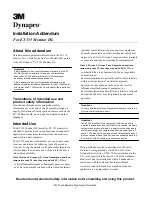
LAYOUT AND FUNCTION
14
4
LAYOUT AND FUNCTION
4.1
Brief system description
Working with driverless transport systems (AGVs) requires high vehicle availability in order to achieve optimum
economy.
One particular problem is posed by the drive battery and its charging. With modern high-performance batter-
ies, the charging process can now be integrated into the normal operating process of the system.
In places where waiting times occur for operational reasons, battery charging stations can be installed (e.g. in
buffer sections, reversal points, stops, etc). Optimal spatial integration of the charging station into the overall
system is an important aspect. VAHLE has developed special battery charging contacts to meet these require-
ments.
The system consists of a charging contact and a respective current collector. Depending on customer-specific
requirements, the charging contacts and current collectors can be installed on the floor, on the vehicle or as
a charging station.
As a standard, the charging contacts are operated on contact bevels (raised and lowered) as a sliding contact,
thereby creating an effect that supports cleaning.
Charging contacts can also be operated as a press-on type by means of an actuator (stationary). In this case,
special attention should be paid to cleaning any potentially interfering oxide layers.
To prevent coarse dirt deposits on the charging contact, the current collector can be equipped with a cleaning
brush.
The current collector/contact plate charging unit is designed for dry indoor installations with an operating volt-
age of 12-80 V. For nominal voltages above 25 VAC or 60 VDC, protection against direct contact is required on
site. For special conditions such as humidity, outdoor use, large contact areas, etc., the relevant standards
must be observed, in particular:
• DIN EN 60204-1
• DIN EN 60204-32
• DIN EN 60664-1
.
















































